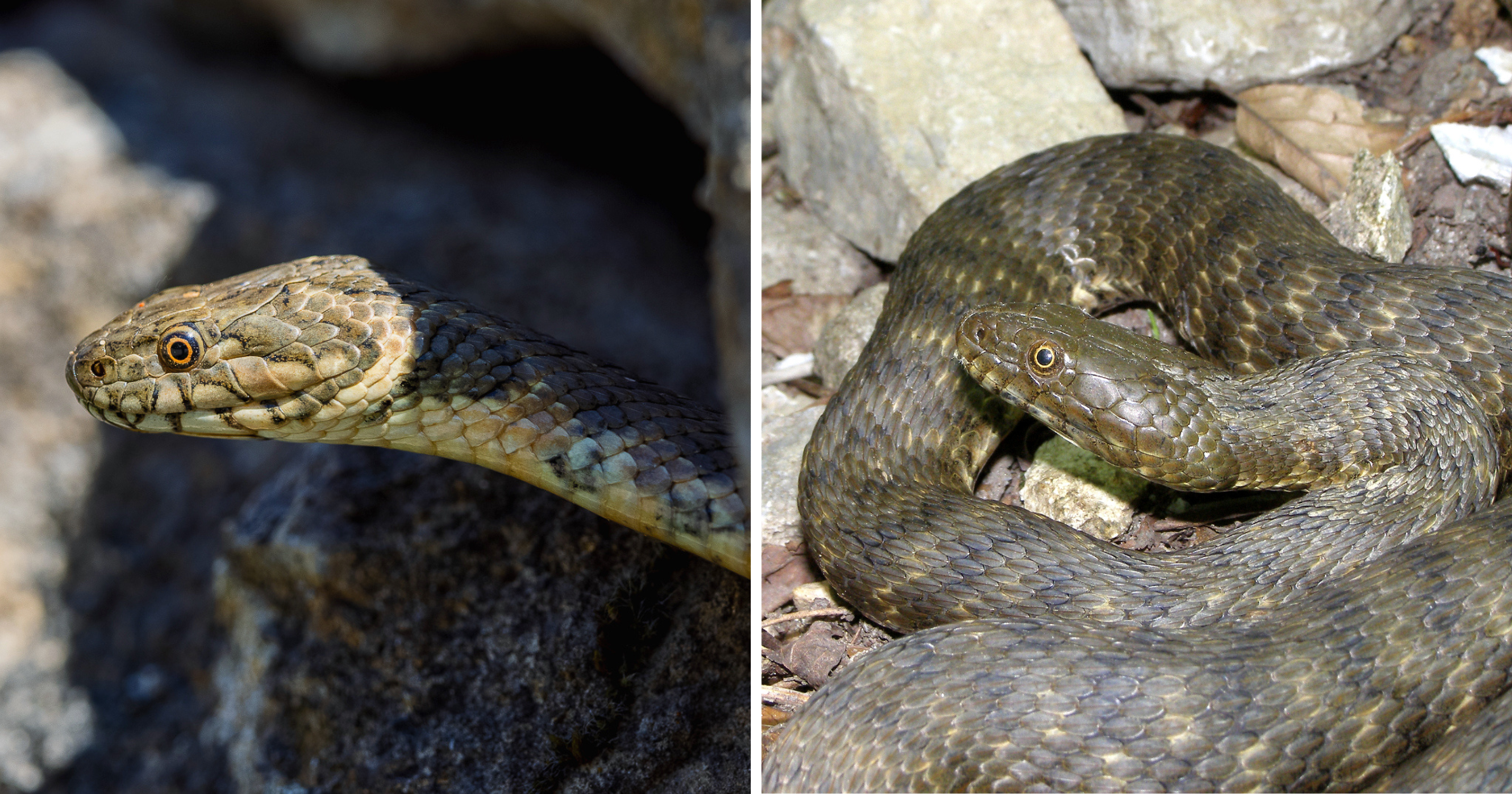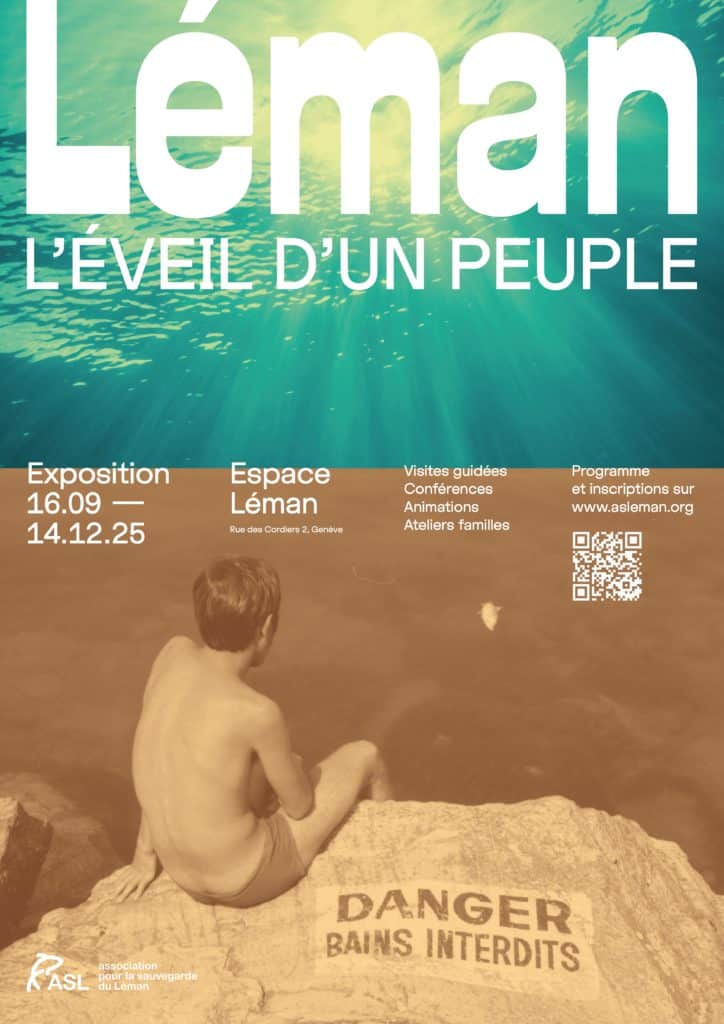Snake habitats are often associated with hot, dry environments, but in the Lake Geneva region, the different species of snake challenge this preconception. These include the viperine and tessellated snakes, which despite their genetic and visual similarities are distinct species.
Only a very few places are home to both species. The banks of the Lavaux are one of them. Originating from a common ancestor, the Alps separated them into two populations, leading to the formation of two different species, also known as speciation. The viperine snake became established on the shores of Lake Geneva, while the tessellated snake occurs naturally south of the Alps. Since the 1920s, the tessellated garter snake, introduced by humans, has also colonised the banks of Lavaux.
Both species are excellent swimmers and feed mainly on fish, with the occasional amphibian. They also share defence mechanisms, such as flattening the neck area like a cobra, discharging cloacal glands to emit a foul odour and coating themselves with their own excrement to become repulsive to predators. If danger persists, the garter snake can fake its own death, a strategy rarely used by the viperine snake.
Given their visual and behavioural similarities, they can be distinguished by counting the number of scales between the snout and the eye: four for the Tessellated snake, three for the Viperine snake. This distinction can be tricky to make on live snakes, but it is possible with a relatively recent annual moult where the scales remain visible.
To observe these species, favour bushy or rocky areas along bodies of water such as ponds, lakes or rivers, where these snakes generally find refuge to enjoy the sun undisturbed.
📷: Viperine snake (©Gilles Corsand) / Tessellated snake (©Mircea Nita)


